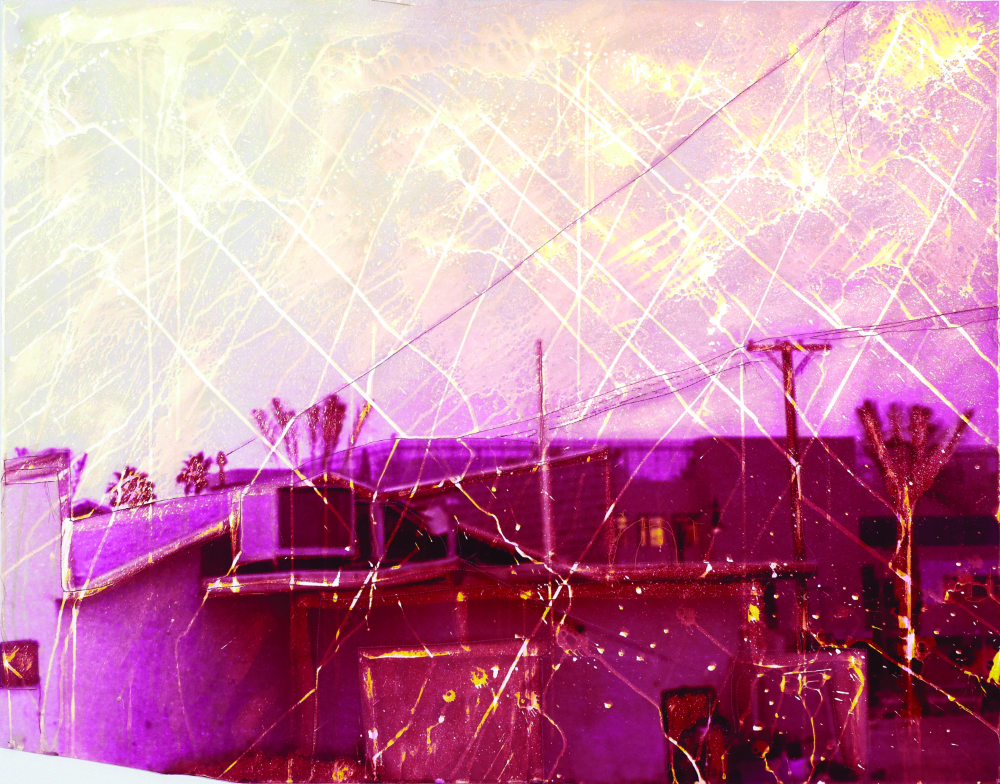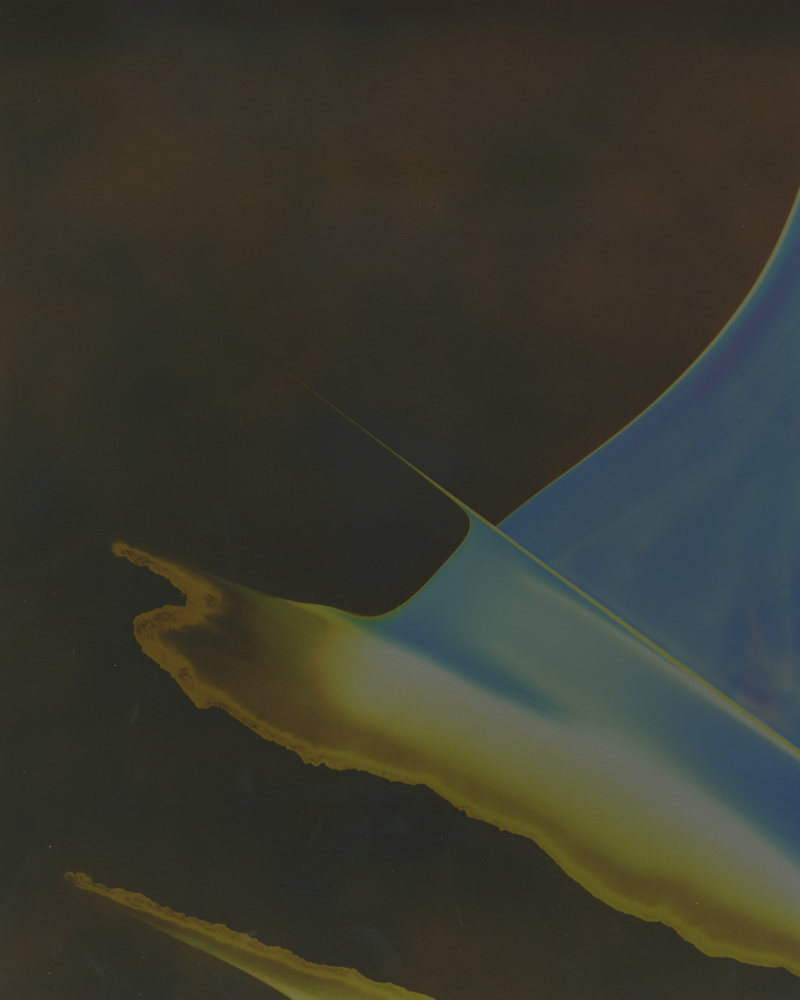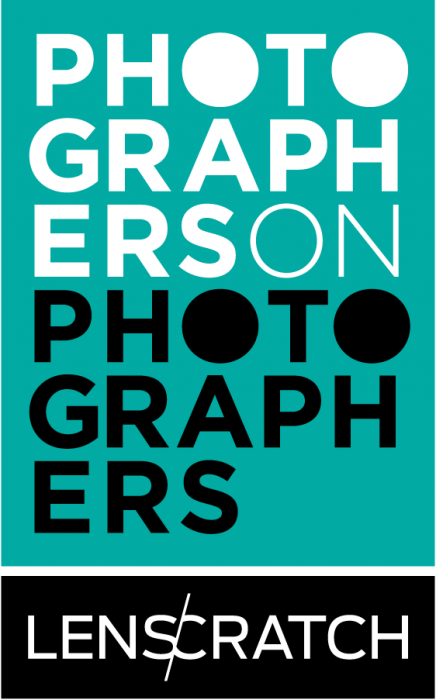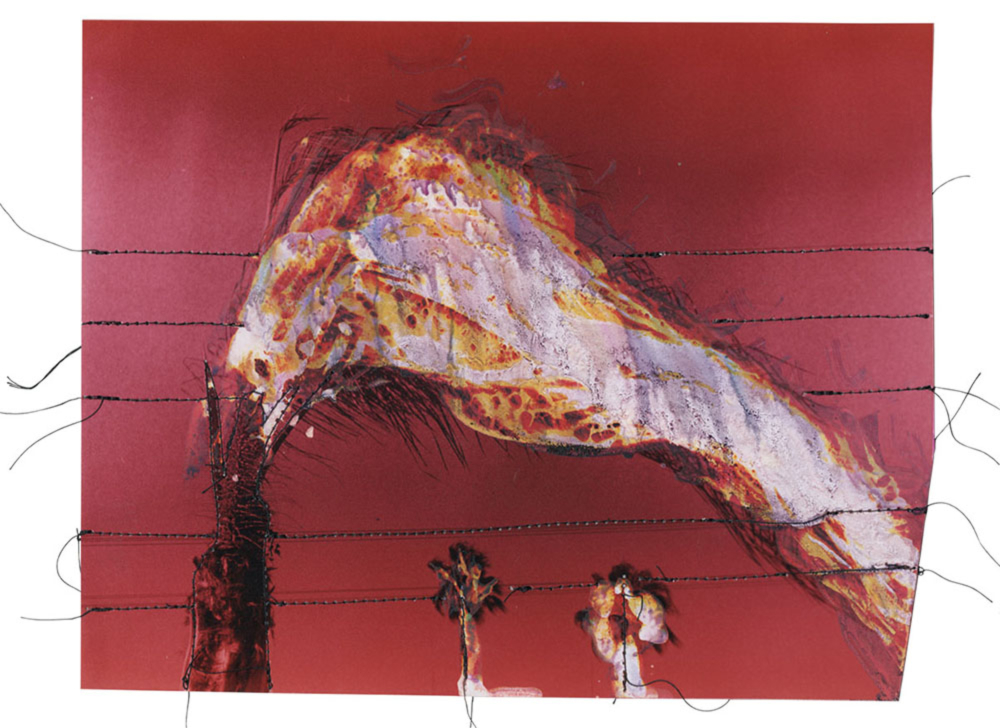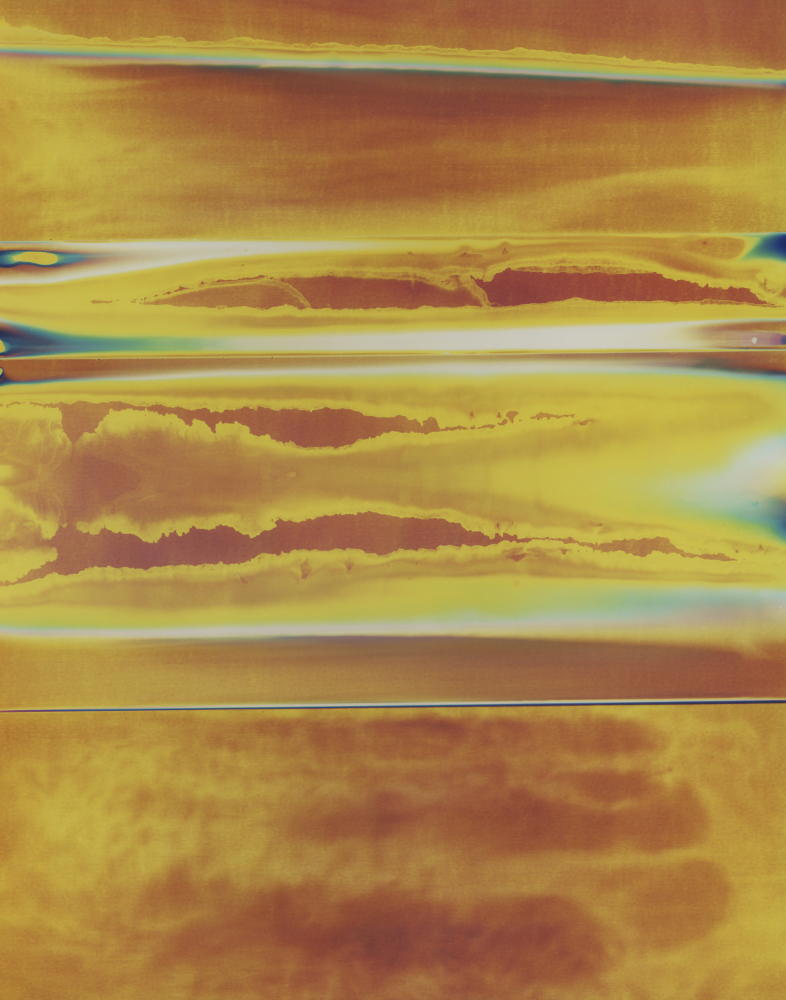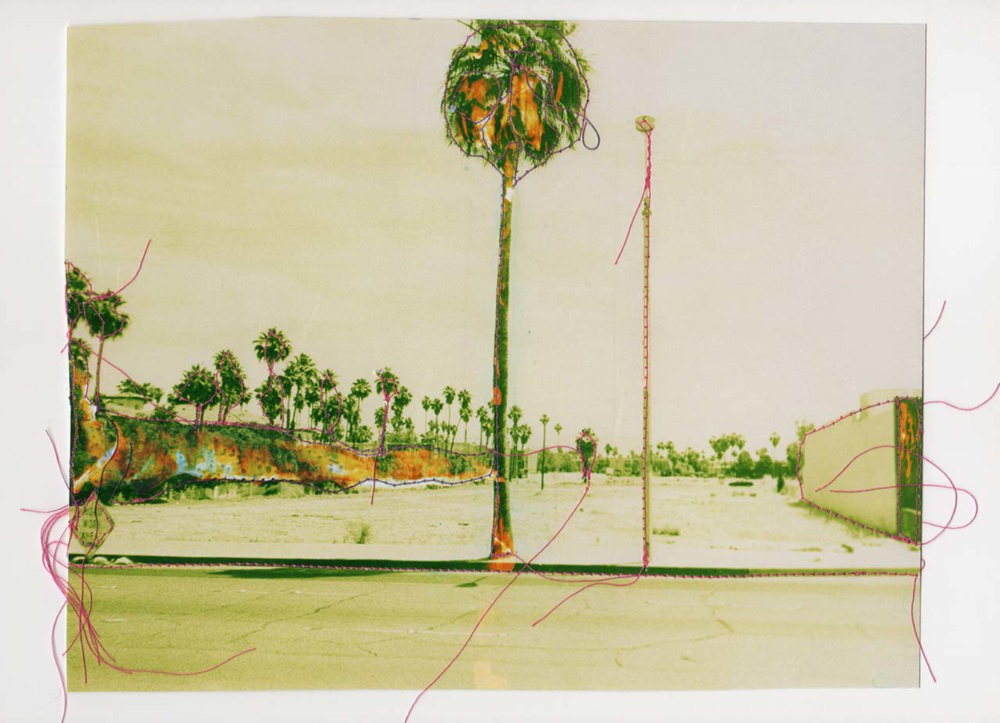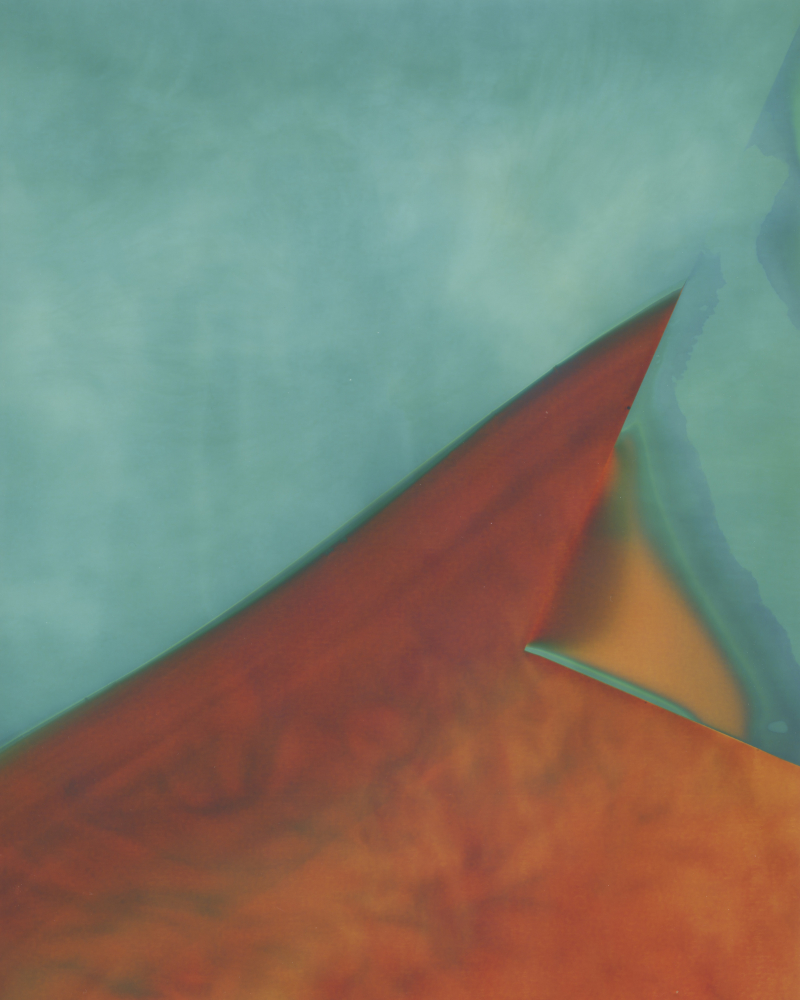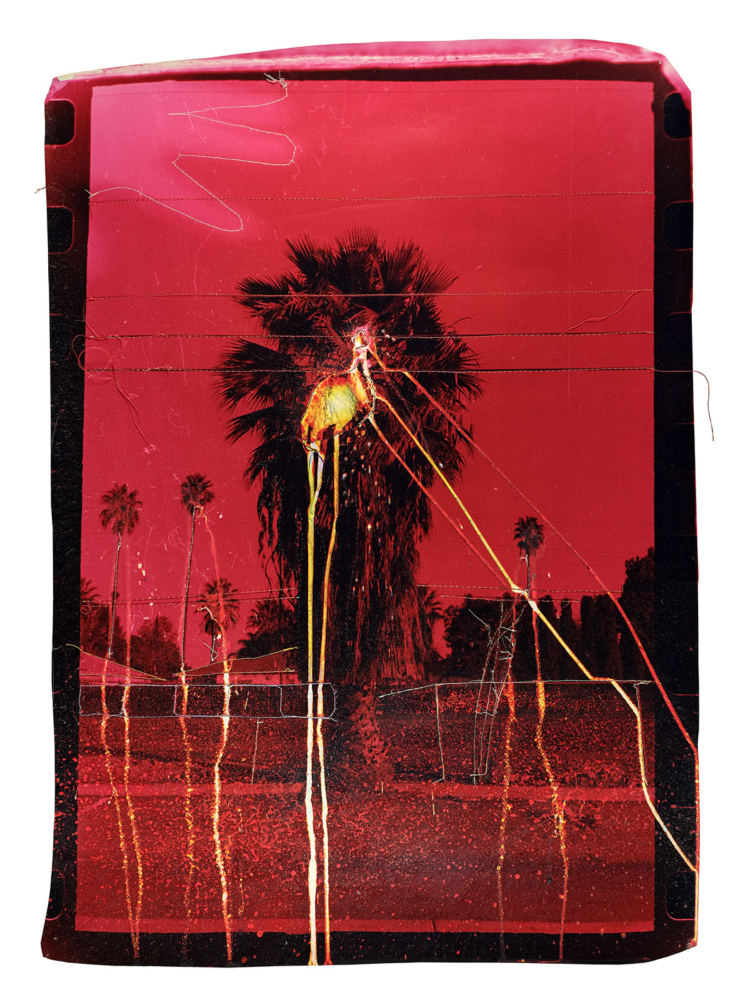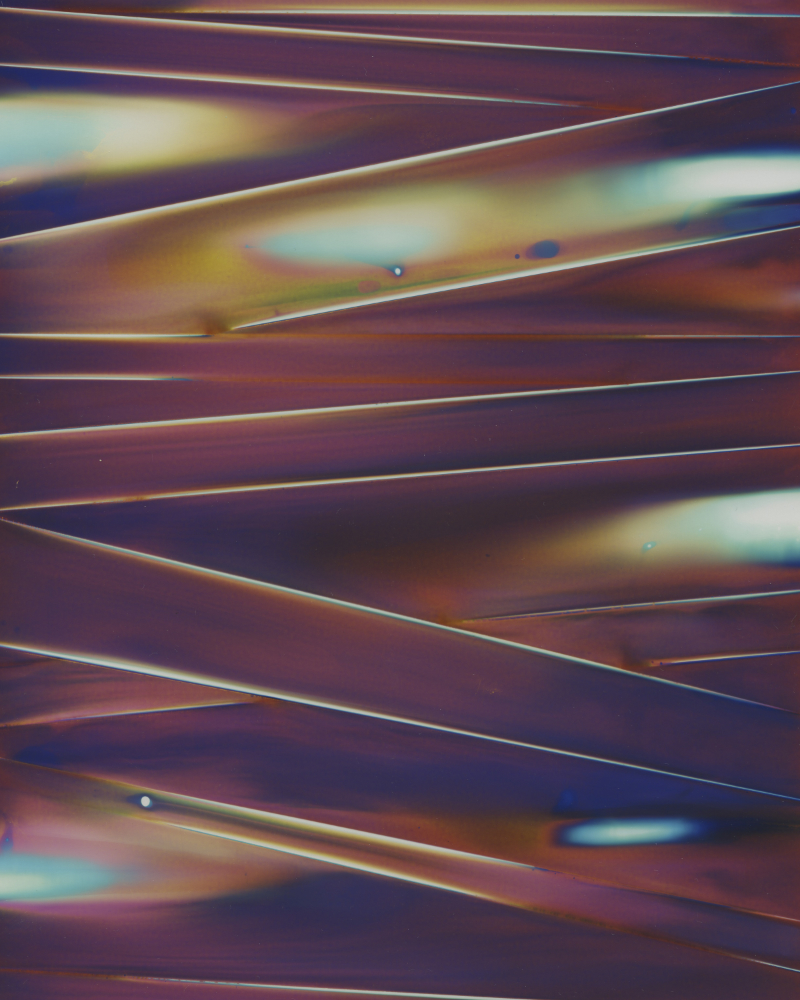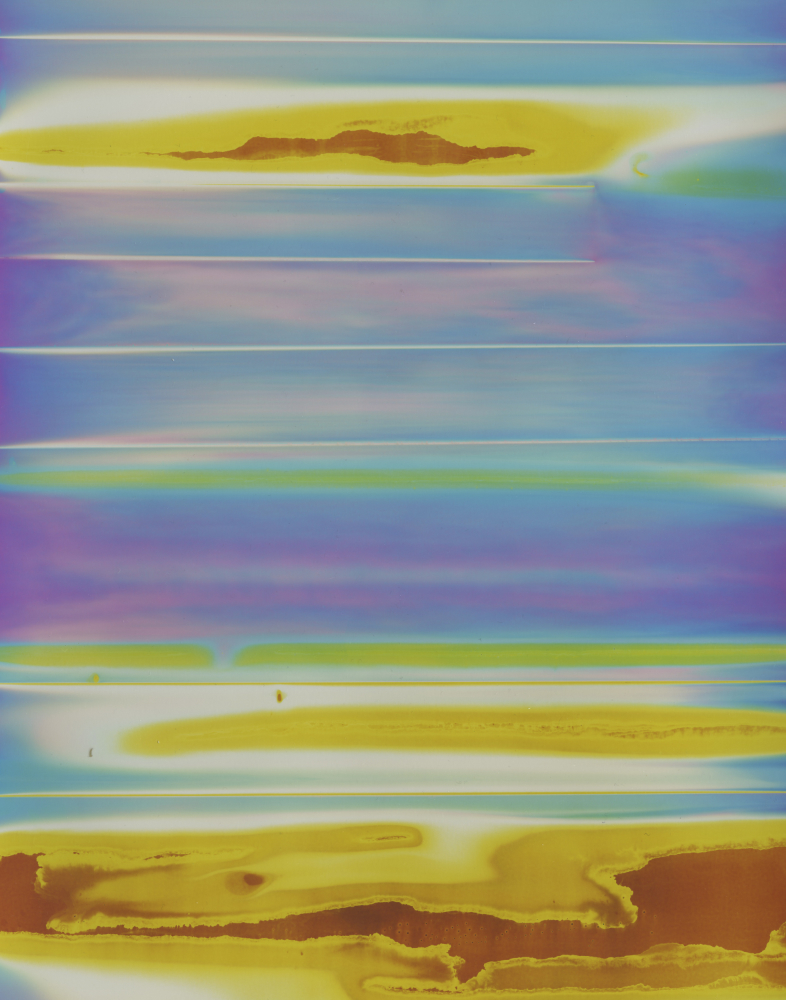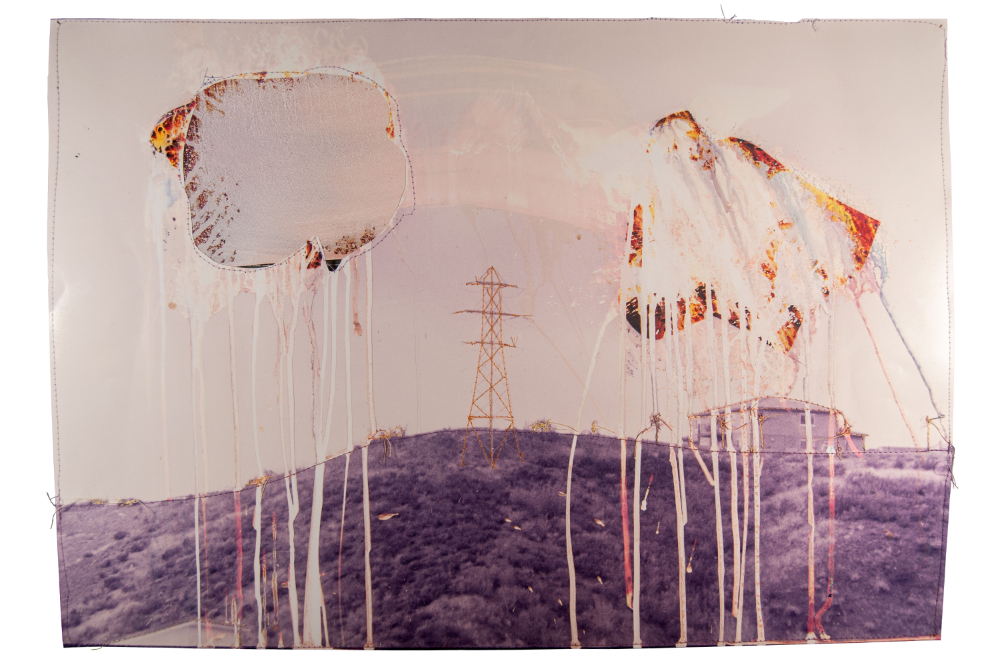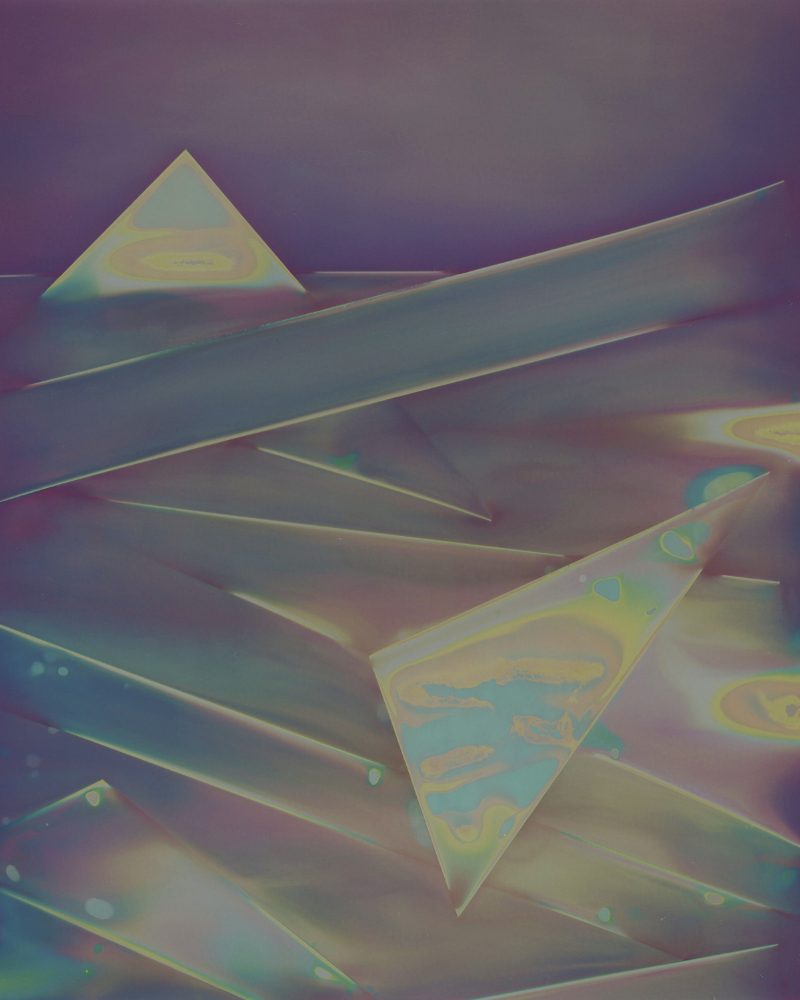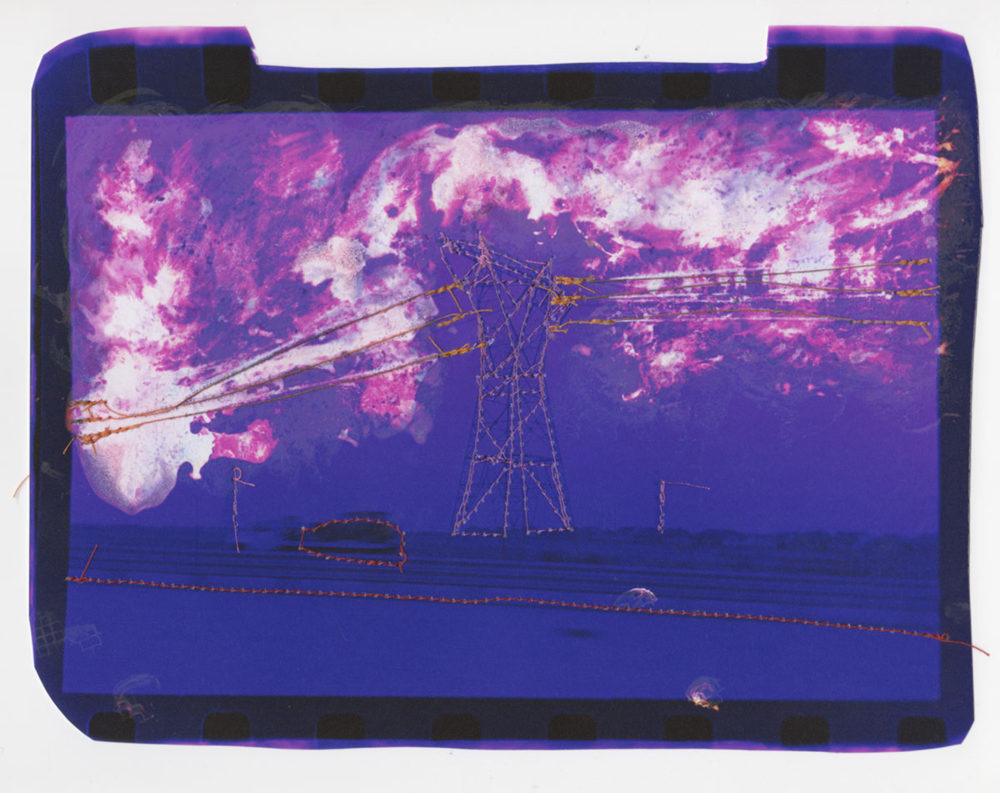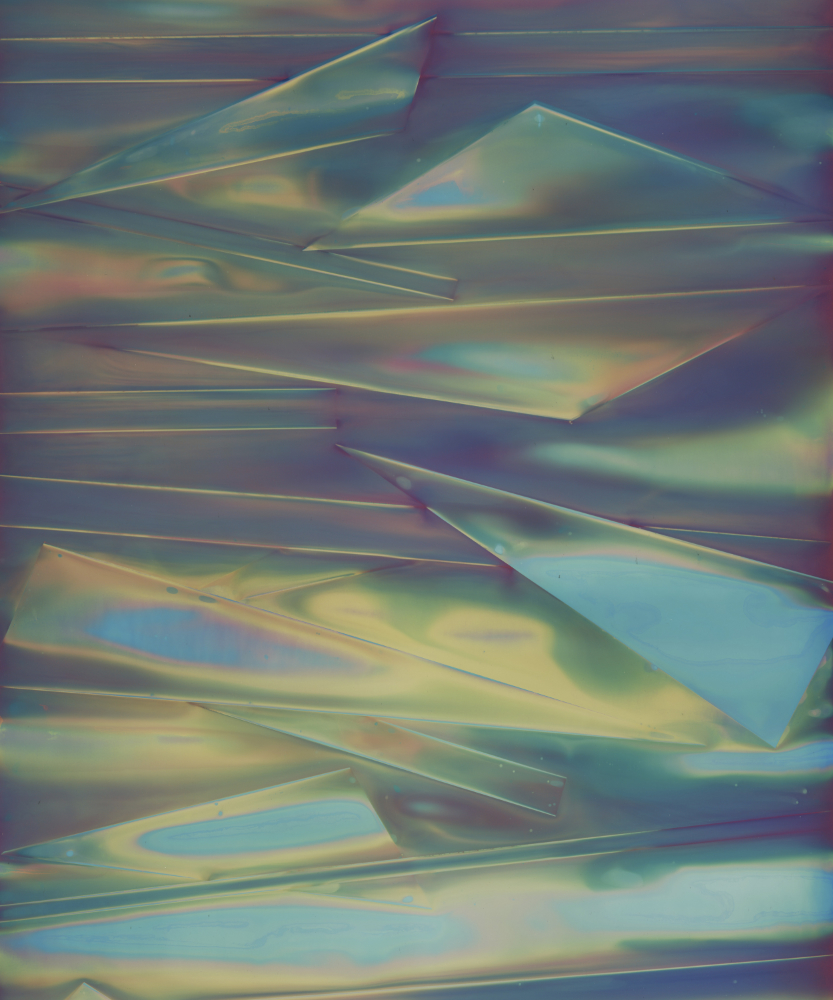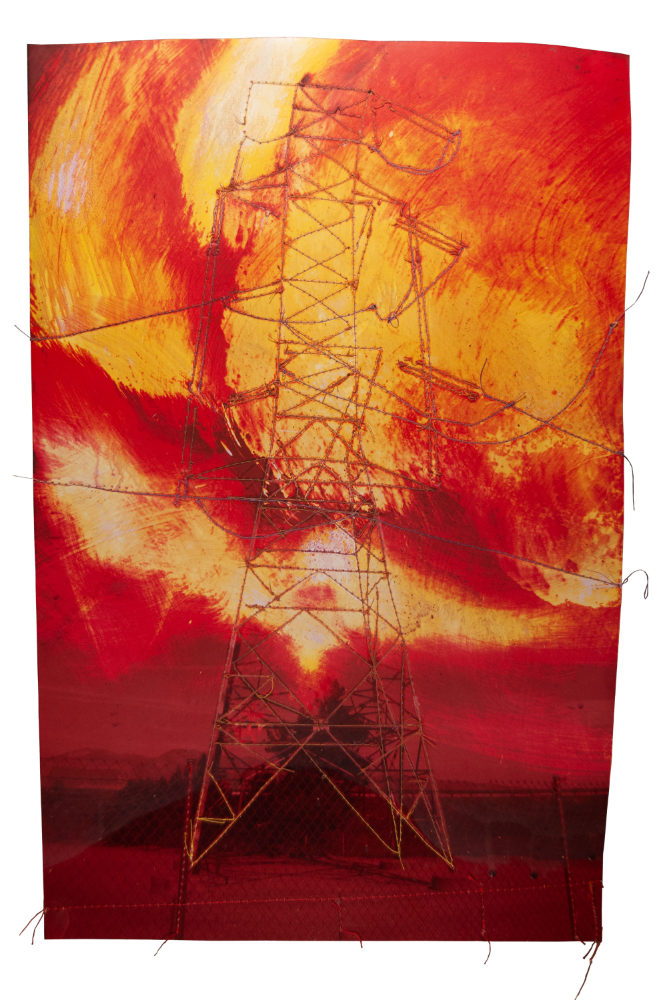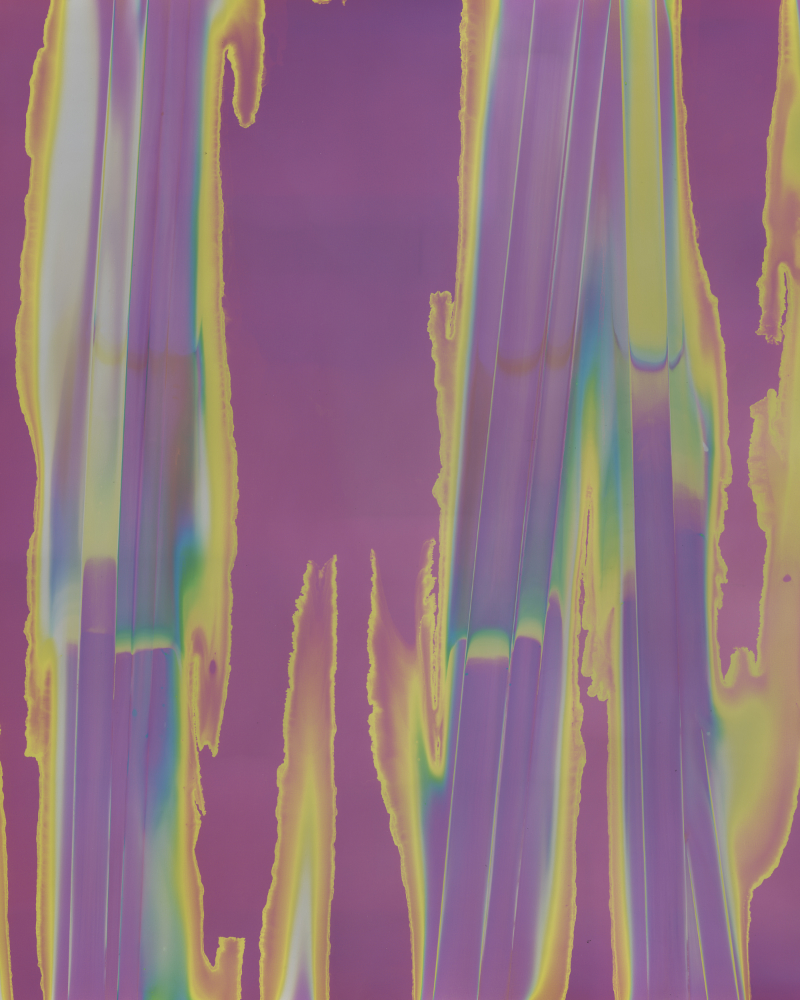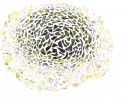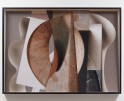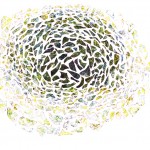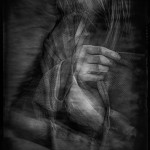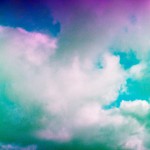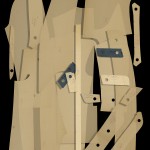Photographers on Photographers: Andrew K. Thompson in conversation with Joseph Minek
I first became aware of Joseph Minek’s cameraless photography through former Gallery 1/1 owner, Dan Shepherd’s Instagram feed. Minek’s unconventional use of light-sensitive materials echoed many of my interests, but there were other similarities. Each of us is engaged in photography in unorthodox ways while working outside of traditional art enclaves. Myself in San Bernardino, CA, and Joseph in Cleveland, OH. We are a part of a network of photographers linked through Dan Shepherd’s curatorial vision, plus we are both teaching in community and private colleges. One day in his IG Story, he posed the question, “Can a sunburn be considered photographic?” Intrigued, I reached out to him for a chat about that question and more.
Joseph Minek is an artist and educator based in Cleveland Ohio. Joseph received his Masters of Fine Arts degree in Photography & Film from Virginia Commonwealth University and his Bachelor of Fine Arts degree in photography from the Cleveland Institute of Art. His work has been exhibited in spaces such as the Cleveland Museum of Art, Galerie Kornfeld (Berlin), Gallery 1/1 (San Jose), and Denny Dimin Gallery (New York). Joseph is currently focusing on his studio practice dealing with the possibilities of photographic material while holding the position of Lecturer at Cuyahoga Community College. Instagram: @josephminek
Andrew K. Thompson is an artist and educator working in San Bernardino, California. He holds an MFA degree in Studio Art and Design from the California State University, San Bernardino, and a Certificate Degree in Art Business from New York University along with a BFA in Photography from the Academy of Art, San Francisco. He has exhibited throughout the United States including at the Klotz Gallery, Gallery 1/1, California Museum of Photography, The Center for Fine Art Photography, and the SRO Photo Gallery at Texas Tech University. Musings on his work have appeared on Saturday Night Live, The Village Voice, L.A. Weekly, and KVC_aRts. His images have appeared in Elle Magazine, Urban Italia, Rhythm Magazine, Time Out New York, The Village Voice, and Artvoices. He has written for Artvoices and Dotphotozine. Thompson is the founder of The Little Gallery of San Bernardino and is represented by Klotz Gallery. Instagram: @Andrew_K_Thompson
Andrew K. Thompson: Joseph Minek, you do a lot of cameraless photography and unorthodox use of photography. Can you tell me a little bit about your background, like what got you into photography? Where did you study, and then we’ll jump into cameraless.
Joseph Minek: Yeah. So getting into photography. I would say there were three key areas that sort of got me to where I am today. Um first was being like seven, and my parents gave me a Polaroid camera. I was just playing with that. The second was my junior high school, getting into a photography class and just falling in love with that, which led me to go to school for photography.
And that was sort of a weird thing. Because at first, I went to the community college that I teach now, and I don’t think that I passed the single class while I was there.
AKT: No? Not even the photo class?
JM: I think I passed the photo class. At that point, I just didn’t really care. I was, you know, eighteen years old.
AKT: Yeah.
JM: From there, I decided to go up to the Art Institute of Pittsburgh. I was there for like a year and a half and wasn’t feeling the commercial aspect of photography taught there. At that point, I moved back to Cleveland and started going to the Cleveland Institute of Art and learning more about, you know, I guess “fine art photography,” if you want to call it that. Conceptual Photography. In probably 2008-2009, I started really getting into the idea of material in photography. The main catalyst was over the summer going into my senior year of undergrad, where I started like burning negatives or burning positives and scanning those in. It was just this really sort of interesting idea. And I would say all the work that I make now is photography but not photography at the same time.
There’s always been that discussion, is this a photograph, is it not? What do we consider photographs? But yeah, that’s how I got into it, and since then, it’s just sort of evolved in the work I’m making now. It’s been five and a half years or so.
AKT: And what led you to get a masters in photography
JM: In all reality, it came down to I was finishing up undergrad, I had just eight months prior figured out this idea of materiality in time. I was really getting going with it, and my thesis was about this idea of image versus object, which was the cyclical conversation that I still like to talk about, but I feel like it goes nowhere.
AKT: Sure.
JM: In a way, when I was in school, I was still thinking to myself, I don’t want to leave school. I want to pursue this more. So during my last year of undergrad, I applied to grad school.
AKT: Yeah, because I think that cyclical conversation will be touched on again. Can you kind of give me a little preview of the image versus object?
JM: I mean, I think it all goes back to the idea of having an image. We’re thinking about photography as an image, but at the same time, depending on who’s reviewing it, it still becomes an object or part of an object, if it’s in a photo book, or if it’s a graphic print, or even if it’s on a screen. How important is the materiality of that object compared to, you know, the aesthetics of that image? How do they push and pull off of each other to give meaning to a piece?
No answer. There isn’t an answer. I mean, even the same thing with my work is like that, you know, there’s no answers.
AKT: No. Answers aren’t fun, are they?
JM: No, and that’s the thing, I don’t want to give people answers. I just want to have a discussion about the ideas that are interesting to me, and the thing that I’m interested in is photography.
AKT: So tell me about how you got into your process of cameraless photography?
JM: Okay, so that is a long one. It started in undergrad. I don’t even know if that would be considered cameraless at first. But I started shooting with a toy camera, and I took a single image. It had a bit of the sky because it was just a blue color field. I took that, and I started to burn the positive. It became really interesting, the chemical reactions that were happening from that like a little bit of bubbling of the emulsion. Then I would scan it in and then enlarge it.
So, I think that would be maybe the start of it, but it still involved the camera. But it was this color field. And that’s actually something that has been in my work this whole time—this idea of color and how color functions.
Because the way that I think of color is it’s sort of like the purest item that you can have in a photograph. If you think about it, like if I’m taking a portrait. It’s a representation of that person, but it’s not that person.
AKT: Yeah.
JM: If I am taking an image of a color field, it is simultaneously. A representation of that color and that color.
AKT: Yes.
JM: So it becomes, you know, like subject and representation at the same time. Which, I mean, I don’t know why I think about that, but that’s just a really interesting facet to me.
AKT: Sure, sure, sure. I think about it too. I’d have to dig through my books, but are you familiar with Towards a philosophy of photography by Vilém Flusser?
JM: Yes.
AKT: That very much echoes his arguments. When I read that book myself, it was one of those moments to stop and think about the conceptual idea of, like, what is green?
JM: Yeah.
AKT: I often think about the color red in photography. I’m sure if you’ve looked through enough history books, you can see that the red shifts cooler as it becomes more contemporary.
JM: Interesting. I was thinking about just the idea of color. I don’t know; you might have seen it going around Instagram about the way that Kodak made their film for caucasian skin and how that’s been like slowly changing over time.
AKT: Yes. The Shirley card.
JM: So that’s something that’s really interesting. Like how color actually functions in photography
AKT: Well, and sorry to cut you off. But here’s our first point of race and politics, right? Because The Shirley card and Kodak, you know, and all the films were balanced to Caucasian skin, and it wasn’t fixed until like furniture makers wanted their wood to look better.
JM: Yeah.
AKT: You know, I have to say that when I first reached out and said, “Hey, we should talk” was before the George Floyd killing and all the protests. And honestly, I’ve been thinking about this a lot. Because, what does it mean for you and me, two Caucasian guys, to discuss what it means to be a photographer, what does photography mean, and what is a photograph? Would we ignore these questions? I was hoping that we wouldn’t.
JM: No matter what, even though my work has nothing to do with any of this, there are always ways that we can get back to and speak about those types of things.
As artists and as educators, we have to know a little bit about everything in the world. I’ve had students who will bring up something that I don’t know anything about, and I’ll go home, research it so I can have a conversation with you about it. Or let me find someone who I know that makes work about this or can talk to you about this.
AKT: Yeah, yeah. It’s tricky, and it’s important as an educator to approach representation through photography respectfully.
I’m in San Bernardino, which is predominantly first-generation Latinx, and it’s one of those things where I don’t look the same or share their lived experiences, but I make efforts to relate to and study what I’m missing.
JM: Yeah, I mean, the two schools that I teach at here in Cleveland are polar opposites. I teach at a community college, which has lower-income students and is a mix of races. And then I teach at the Cleveland Institute of Art.
AKT: Private?
JM: Yeah, a private institution that, you know, has a mix of races in there, but if we’re thinking about class, a lot of them are more upper middle class. It’s like a slightly different world, teaching both of them. And it’s really interesting to see the difference between, you know, a 20 to 30-minute drive.
AKT: Yeah, I have that experience because one of my other schools is private with a higher income base. You know, and I always drive through the parking lot, like, “I’ll never afford a car like that.” There’s a whiplash that some adjunct educators go through, it’s an odd feeling.
Can you talk to me about the concerns at the private school? What are your students’ worries? How do they approach photography and some of their questions versus junior college?
JM: Yeah, Community College is mainly technical. We don’t get into too much conceptual notions but I try to bring those ideas in as much as possible. So they will talk about them, but I think it’s also one of those things where I’m the first person to talk to them about that. I’ll say, “Okay, let’s look at this work,” you know, “this is talking fundamentally about race and class.” I’m bringing that up. I can tell some students are very uncomfortable, some students aren’t, but I’m like, “look, this is stuff that we need to talk about.”
Yeah, I know it’s Photoshop, but it’s a problem. Let’s talk about the screwed up shit that’s gone on in Photoshop. Like image manipulation with body dysmorphia, or, you know, beauty standards.
The private college is all over the board. Some want to do commercial work, some more conceptual / fine art, while some are talking about race or gender issues.
AKT: How’s the art scene in your area. You’re in Cleveland, is that right?
JM: It’s alright.
AKT: Do you have any Museums?
JM: Yeah, the problem is we have low-end galleries, and then we have higher institutions like the Museum of Contemporary Art, and there’s no middle ground. There’s a couple of galleries, but there’s not enough of them.
AKT: Sure. Now, being in a region like ourselves, somewhere between New York and Los Angeles, is there a desire or a quest to get out, or do you plan on staying there?
JM: I am fine with being in Cleveland, it’s cheap here. Like, f**k moving to New York. I know tons of people who live in New York. I love it here. I mean, I have a 1000 square foot two-bedroom apartment to myself. My studio is in the school darkroom. I just pay for my chemistry and my paper. So it’s one of those things like, No, I don’t want to live there just to say that I show in New York. I had a solo show back in 2017 in New York. And that was after going up there for a studio visit because someone in Cleveland knew someone up there. Yeah, so you know it’s one of those types of things. The internet is great, take Instagram, for instance. A gallery in Berlin just sold a print for me.
AKT: All right. Congratulations.
JM: Yeah, it was a month ago. I’ve been shown with a gallery in England, so it’s one of those things like you don’t need to be in those places to get your work there.
AKT: That underlines that Instagram is good for photographers
JM: For artists, that is the platform.
AKT: Okay. let’s pivot back to your work for a little bit. Let me guess first. You are applying chemicals onto color paper. It looks like a chromogenic paper. The ones behind you look like they have a metallic surface.
JM: Yeah.
AKT: And you’re doing it all in daylight. Correct?
JM: Yes, well, light but not actual daylight.
AKT: Can you tell us a little bit about the process and how you got started?
JM: Yeah, of course, but that’s another long story.
AKT: I like long stories.
JM: So, I finished undergrad dealing with the burning of positive film and scanning. I went into grad school, and my first year there, I was still using the negative, but I was using water to break them apart. Fast forward to the second year, and I decided to get away from the negative and go straight to the print. Well, I was just getting C-prints made, Lightjets, and then deconstructing the photographic paper. It went from deconstructing photographic paper through my thesis and the next year and a half or so. At school, We had tons of RA4 paper lying around. We had tons of chemistry. We didn’t have a color processor anymore so none of it was being used. I asked myself, can I construct images on this paper? So I just started opening the paper and throwing chemistry on it. From there, I decided on the paper that I wanted to use, which is the Kodak Premier Endura metallic photo paper. I always have to remember the exact name of it.
I use that paper and the chemistry that I actually use the E6.
AKT: Really?
JM: Is all E6 chemistry on it.
AKT: That makes sense because I was curious about how you got those bright colors with RA4 chemicals.
JM: Yeah, but depending on when I go from the first developer over to the color developer, I can get it to go from being like purple, pink, red, orange, yellow. And then if I go from the color developer back into the first developer, I can get that gray to go blue, or that blue to go green to like some like peachy colors and then using the Blix will just lightning or intensify it.
AKT: Do you use one of those sponge brushes, or do you have several different layer applications tools?
JM: No. I don’t use any brushes.
AKT: Okay, come on.
JM: What I actually do is I’ll lay the piece of paper out, and then I put strips on top of them. You can see on this one, these striations right here are from the piece of paper, being on there. Then what I do is rolling. I roll a piece of paper out, and I dip it into the chemistry.
AKT: Okay, I understand.
JM: You can see this edge that happens. That I have taken off. That’s the edge before I can flip it back over. These areas were actually because of how I rolled it. They actually don’t get any chemistry until I put them into the tray.
So I do a two-part thing or a similar thing like on that one. You can see these striations that happen. These nice little lines here that are happening are actually where a little bit of chemistry hit, and these areas didn’t. So those will actually develop a little bit faster.
AKT: Okay.
JM: It’s taken me now five and a half years to figure all this out.
AKT: Oh, sure, sure. It looks sophisticated.
JM: Yeah, people always say the work reminds them of Mariah Robertson.
AKT: Yeah, sure, but your work is very different.
JM: I’m going to be in a show with her which is exciting.
AKT: Yeah?
JM: Yeah, I’m really excited. I just found out about it last week.
AKT: Hey! Good.
JM: I’m going to make 10-foot by 12-foot pieces that will be multiple panels.
AKT: Yeah? Where are you going to get paper that big?
JM: I can get paper 50 inches. I’ve actually talked to Kodak to see if they would make 72-inch roles and metallic. They told me they would if I special ordered it and order like 10 to 20 rolls of it, it would cost me like $15,000 that I don’t have.
AKT: Not yet.
JM: Not yet, but yeah. The main thing I’ve been trying to do is figure out how to build because I need to build stuff in like the studio to make these big pieces.
AKT: Like what?
JM: I’m going to build new tubes for myself. So I need to get a six or eight-inch diameter PVC pipe. Like 55 inches tall. I’m figuring out drying systems. I finally figured out the easiest drying system. I’m getting five C-stands and putting arms on them. Then I just need to get an assistant to help me. Just because this metallic paper is so damn thin, it gets scratches so easily. It’s one of those things I know are inevitable, but I just want to have someone there with me. I’d like an extra set of hands like on standby.
AKT: How do you present to work like when you show it?
JM: I usually do thin white frames. Plastic spaces in them. These bigger ones that I’m going to do. I think they are just going to be mounted on to aluminum because framing would be the biggest pain in the ass.
AKT: Is there anything else I didn’t ask yet? Oh! We never spoke about sunburns.
JM: Yeah. This is something that I’ve been thinking about a lot lately. All my work has been centered around this idea of photography and using the material of photography and sort of asking that question, What is photography? But then now I’m going even more broad, what’s photographic? And I think it’s a really interesting conversation to have. What is the definition of something being photographic or, you know, having characteristics of a photograph? A photograph is a physical reaction to light. Something changes. So technically plants growing are photographic. You’ll see people using plants to make images. I feel the same thing about sunburns. If I was to put a piece of black tape on my arm and then sit outside for five hours. That’s technically a photograph in a way.
AKT: That’s photosensitive, for sure.
JM: Yeah, It’s thinking more about this idea of photosensitive material and how we think of the word photographic. It all comes down to Semantics.
AKT: I think it’s interesting. I tend to land on the side of if it used fixer, it’s a photograph.
JM: That makes sense.
AKT: Yea, and, of course, there are various exceptions because, anthotypes don’t get fixed, and cyanotypes don’t get fix, but, for me, it seems that like the hyposulphite of soda is the linchpin between things that fade away and things that we remember.
JM: But if we’re thinking about this idea of things that we remember as I think, it’s almost too vague because something can fade away, but we still have that memory of it. We just don’t have the physical object of it. It seems like you’re suggesting we need that object.
AKT: Imagine this. A memory palace is something that helps you memorize things. They don’t physically exist, and you have a memory of it, but if you don’t continue to visit your palace, memory fades like an unfixed photographic memory is unreliable. When meditating on that thought, I usually land on the fix.
JM: Yeah, well, that the sort of brings me to this idea of talking about the photographic? What about photographic experience? What do we consider to be photographic? If we’re talking about what’s photographic, could I stand and look at the sun, close my eyes and just bask in the sun? Is that a photographic experience? Feeling that heat coming down, feeling that chemical reaction that we’re getting from that vitamin D? Can we consider that as a photographic experience, and how can we show that, or how can we speak on that?
AKT: That’s a hard question for me to answer. When I think about the idea that we are like plants and that we’re photosensitive, we need vitamin D. We need sunlight. We need water, and in that way, I feel it is photographic, but I wouldn’t know how to show it.
JM: Exactly. And that’s where I’m at—wanting to make work about this. I don’t know how to show that either if I’m talking about the sun. The only thing that I can think is what if I made a light/space work that heats the room and is blinding? How do we talk about that comparative to photography? These are the thoughts that I like to think about.
AKT: Nice. Okay. It’s a pleasure talking with you. I look forward to chatting with you again and seeing your work on Instagram, and we’ll be in touch.
JM: Awesome. Thank you.
Posts on Lenscratch may not be reproduced without the permission of the Lenscratch staff and the photographer.
Recommended
-
The Female Gaze: Alysia Macaulay – Forms Uniquely Her OwnDecember 17th, 2025
-
Bill Armstrong: All A Blur: Photographs from the Infinity SeriesNovember 17th, 2025
-
Robert Rauschenberg at Gemini G.E.LOctober 18th, 2025
-
Erin Shirreff: Permanent DraftsAugust 24th, 2025
-
Shelagh Howard: The Secret KeepersJuly 7th, 2025

